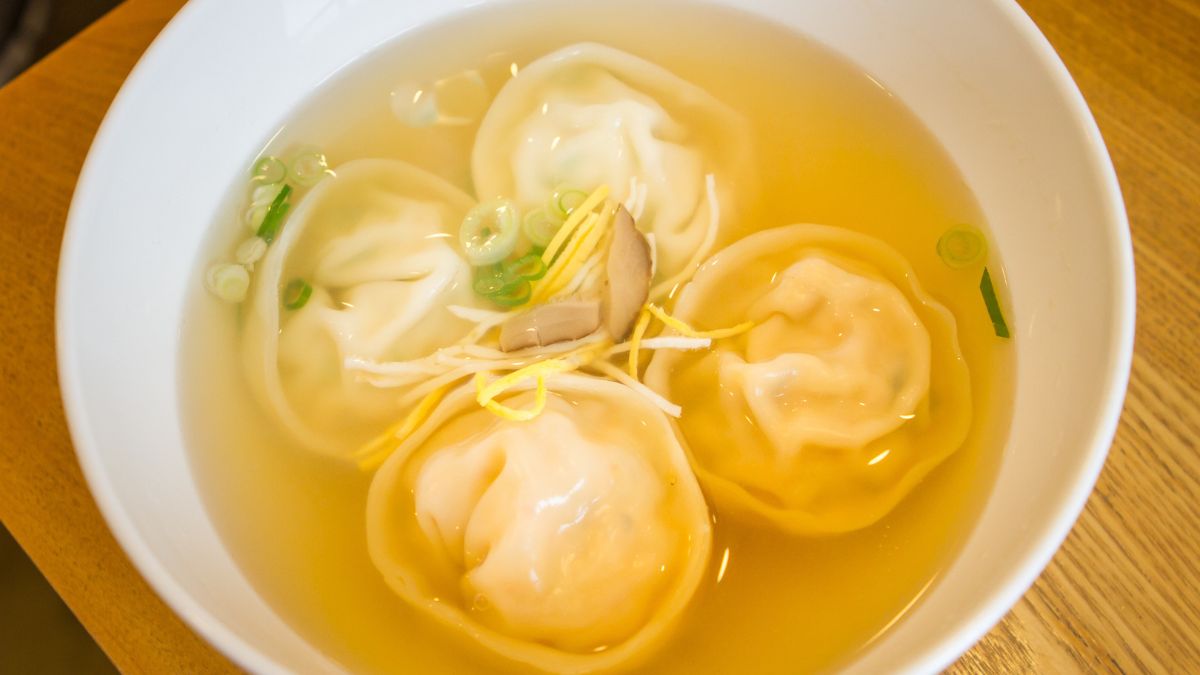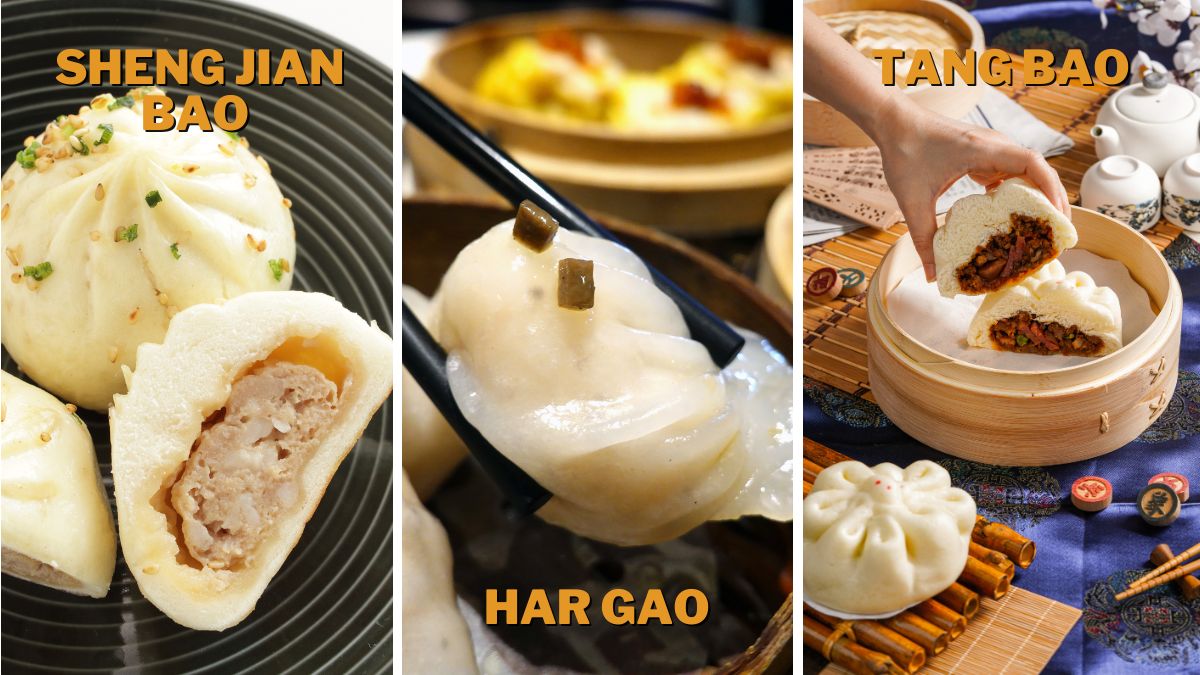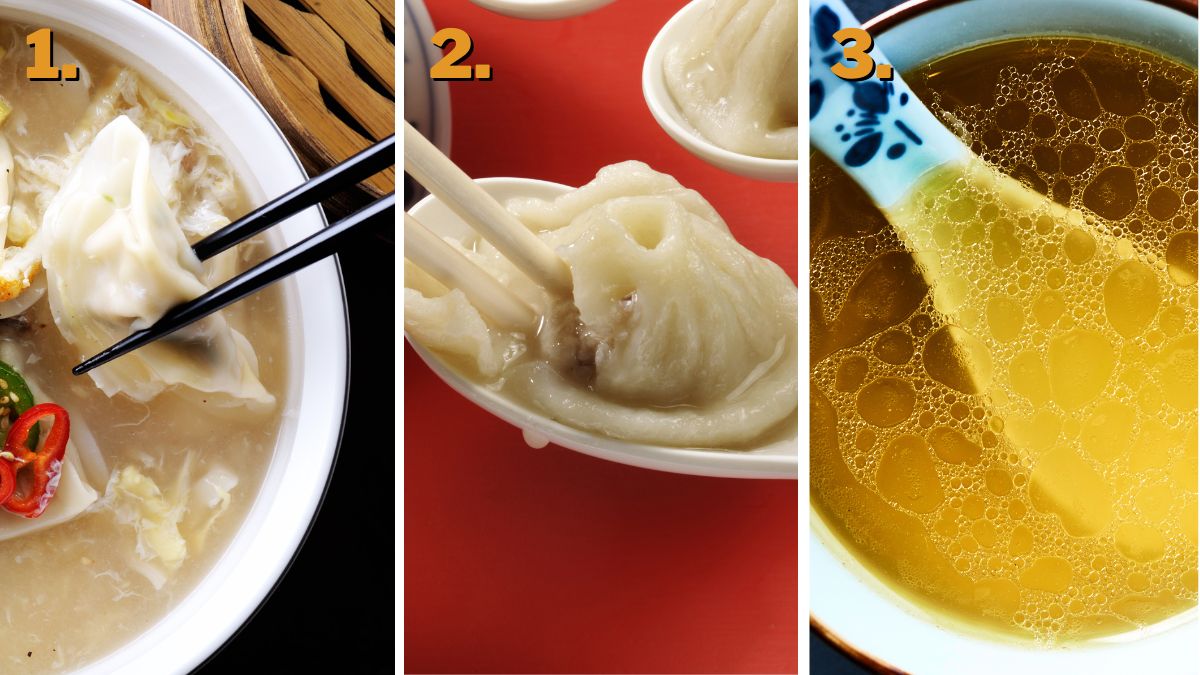What Are Soup Dumplings & What Do They Taste Like?

Soup is always a hearty staple of any country’s cuisine, and the options are endless. I’m trying to think about how many different kinds of soups there are, but I think there is no definite answer. There are different kinds of clear soups, stews, bisques… Today, I became intrigued by soup dumpling soup and started to wonder what soup dumplings actually are.
Soup dumplings are steamed Chinese dumplings filled with jellied broth and minced meat. When cooked, the broth melts and turns into liquid soup, giving diners a flavorful treat while enhancing the meat filling.
If that sounds delicious, let’s dive right in to learn more about this delightful Chinese delicacy.
How Are Soup Dumplings Made?
Making the dumpling itself isn’t that complicated (though it is rather labor-intensive). It’s how to get the jellied broth to melt once it’s cooked that gets a bit tricky. After all, how do you wrap broth inside a dumpling wrapper without it spilling all over you?
The secret lies in how you make the broth. Any regular broth stays liquid when cooled down, which won’t work for a soup dumpling. Instead, you want it to turn gelatinous once it’s cool.
And here’s how you do it without adding anything to solidify the soup: use lots of pork bones and skin. That might sound strange, but we want to extract the collagen from the bones and skin into our soup. Once we have that, all we need to do is store the cooled broth in the fridge and let the collagen do its thing.
With that out of the way, you only need to worry about your dumpling filling. You can use whatever you want – ground pork, beef, shrimp, or vegetables.
And once you have your jellied broth and filling together, it’s time to get them wrapped and steamed in a bamboo basket steamer.

Varieties of Soup Dumplings
You’d be surprised if you think soup dumplings can only exist in one form. Quite a few soup dumpling variations involve some sort of liquefied broth pouring out of the steamed bun. Here are some of them.
Sheng Jian Bao dumplings are similar to xiao long bao but with a few distinct differences. It has a thicker dough, and it’s cooked on a skillet instead of a bamboo basket steamer. A bit of water is poured into the skillet, and the steam cooks the dumpling as it evaporates.
Though not technically considered a “soup dumpling,” Har Gao uses the same concept as the others – releasing a liquefied substance to give diners another experience. For this dumpling, slightly solid pork fat is added before the wrapper is sealed, turning it into liquid once steamed. The fat then coats the filling, giving you the impression that you’re biting into something “juicy.”
The next is Tang Bao – think Xiao Long Bao, but at least twice as big. It’s bigger, flatter, and often has crab meat and roe instead of pork. The result is a rich, deep flavor with more soup for you to enjoy. Be careful when eating it though – its size means the soup can quickly burn your tongue.

What Do Soup Dumplings Taste Like?
A soup dumpling’s flavor depends on its filling and how it’s served – in a soup or fresh from the steamer. Determining a particular taste can be difficult, especially when you can fill a dumpling with just about anything.
What we can do instead is describe what it’s like to eat a soup dumpling. The texture and sensations should be similar, regardless of what the dumpling contains.
Let’s start with the dumpling skin. Traditionally made with flour and water, the skin is thin, delicate, and slightly chewy. It usually doesn’t have intense flavors because it’s not supposed to compete against the filling.
On the other hand, the dumpling’s fillings are the complete opposite of the skin. It offers a burst of flavor – a savory sensation that stands on its own. The filling is also usually made from meat minced with other ingredients, so there’s no need to worry about uneven pieces or chewy bits.
Of course, we can’t forget about the best part: the jellied broth. Once the dumplings are steamed, the jelly melts into liquid. The resulting liquid broth not only spills into your mouth as an extra treat once you eat the dumpling but also coats the filling with more flavor.
How to Eat a Soup Dumpling?
Eating a soup dumpling requires extra care than its non-soup counterparts. The end result is still the same – you enjoying the dumpling – but there are a few steps you must do first.
Step 1: Use chopsticks to pick up the dumpling
Use chopsticks or your fingers to pick up the dumpling. You don’t want to handle it roughly in case the skin tears. The best way to do it is to pick up the dumpling by the top, where the pleats are.
If you’re not confident about keeping your soup from spilling, you can hold a spoon underneath the dumpling. Keeping it there as you pick it up ensures you have something to catch the dumpling’s contents in case the skin tears.
Step 2: Create a hole in the dumpling skin
Take a small bite to create a hole in the dumpling skin. The idea is to keep as much of the soup within the dumpling as possible; avoiding large bites helps you achieve this. It also prevents you from burning your mouth when a large amount of hot broth spills into your mouth.
If you want extra flavor from the skin, you can dip the dumpling before taking a bite. Soup dumplings are usually accompanied by a dip made from soy sauce, vinegar, ginger, or other ingredients. This helps ensure that you’re not biting on bland skin.
Step 3: Enjoy the broth
Give the steam a few seconds to escape, then gently tilt the dumpling towards your mouth or on your spoon so you can enjoy the broth. If you think it’ll be too hot for your tongue, it might be safer to pour the broth onto your spoon and cool it from there. Otherwise, carefully savor the dumpling’s special treat.
If you’re having difficulty with the temperature or you’re eating Tang Bao (which is larger than a typical soup dumpling), try using a straw to suck the broth instead. That way, you can ensure that nothing is spilled, and you can enjoy it at your own pace.
Even if you think you’ll be fine, you should never put an entire dumpling in your mouth. The skin cools quicker than the filling, so the soup may remain hot even if the dumpling feels cool. And if that happens, you risk burning your tongue once the hot broth is released.
And whatever you do, never use a fork to eat a soup dumpling. That’s just asking for disaster.

How Are Soup Dumplings Usually Served?
Despite the seemingly complicated process of making and eating soup dumplings, serving them is straightforward.
To prepare them, all you have to do is to steam the dumplings. Ideally, you have a bamboo steamer to do this – it also doubles as the serving vessel once they’re done. If you don’t have one, you can use another steamer you have at home. Just make sure you take precautions to prevent them from sticking on the surface.
Once they’re done, serve them as is! You can garnish them with some sesame seeds or scallions on top, but that’s not required. And of course, remember your dipping sauce!
Is It Hard to Make Soup Dumplings at Home?
Making soup dumplings at home is relatively easy, but it is time-consuming. Doing everything from scratch will take at least two days of preparation.
Arguably, the most challenging part of the process is securing the jellied broth. Unless you manually add some gelatinous agent to help the broth coagulate quicker, you’ll need a lot of skin and bones to extract as much collagen as possible.
Of course, persevering through the steps is highly rewarding, especially once you take your first slurp out of the dumpling.
If you’re ready to start your soup dumpling journey, here are the steps for making them.
Step 1: Create the Jellied Broth
The broth is arguably the best part of any soup dumpling, so you want to make it as delicious and clean as possible. Here’s how:
- Place the pork skin and bones in a pot of cold water, and bring it to a boil.
- Once the water is boiling, take the contents out and discard the water. Rinse the pot, skin, and bones to remove dirty bits, then place them back into the pot.
- Add water, ginger, green onions, and other aromatic ingredients to the pot. Bring everything to a boil. When the water boils, lower the heat and let it simmer for at least two hours.
- After two hours or so, drain the broth into a container and let it cool. Cover the container and place it in the refrigerator overnight.
Step 2: Make the Dumpling Skin
With your broth resting comfortably in the fridge for 24 hours, it’s time to make the dumpling skin. Thankfully, this process is relatively simple. All you need to do is mix flour and water until a dough forms, then knead it for 15 minutes. The dough should be smooth at this point, so let it rest.
Step 3: Make the Filling
We’re almost there! It’s now time to make the other star of the dumpling: the filling.
Your main ingredient will differ depending on what you intend to use, but the steps remain the same. If you have a food processor, pulse your main ingredient until it turns into a paste-like consistency; if not, mince it as finely as possible.
Afterwards, mix in your seasonings and other accompaniments. Make sure everything is well-incorporated, so take as much time as you need to mix things together.
From this point, you can store your filling in the fridge until you’re ready to assemble your dumplings or go right through the next step.
Step 4: Put Everything Together
Now for the best part: putting together these delicious morsels of flavor! There are a few preliminary steps you need to help the process go as smoothly as possible.
- The broth should now be jellied, so cut them into small cubes.
- Take about a spoonful of your filling and wrap it around a broth cube. You want the jellied broth to be completely enclosed.
With these out of the way, we’re ready to go.
First: the dough. Cut it into small pieces, then roll them into circles that are about three inches wide. Place the filling-jelly combination in the middle, then lift a portion of the dough. Create vertical pleats onto itself, continuing until you reach where you started.
This should take anywhere around 15-20 folds; any less and it might be too loose, any more and it might be too tight. Make sure the top is sealed before placing it in your steamer.
And that’s it! The only remaining step after this point is to steam your creations over boiling water for eight minutes. Take the steamer out of the boiling water, serve, and enjoy!
